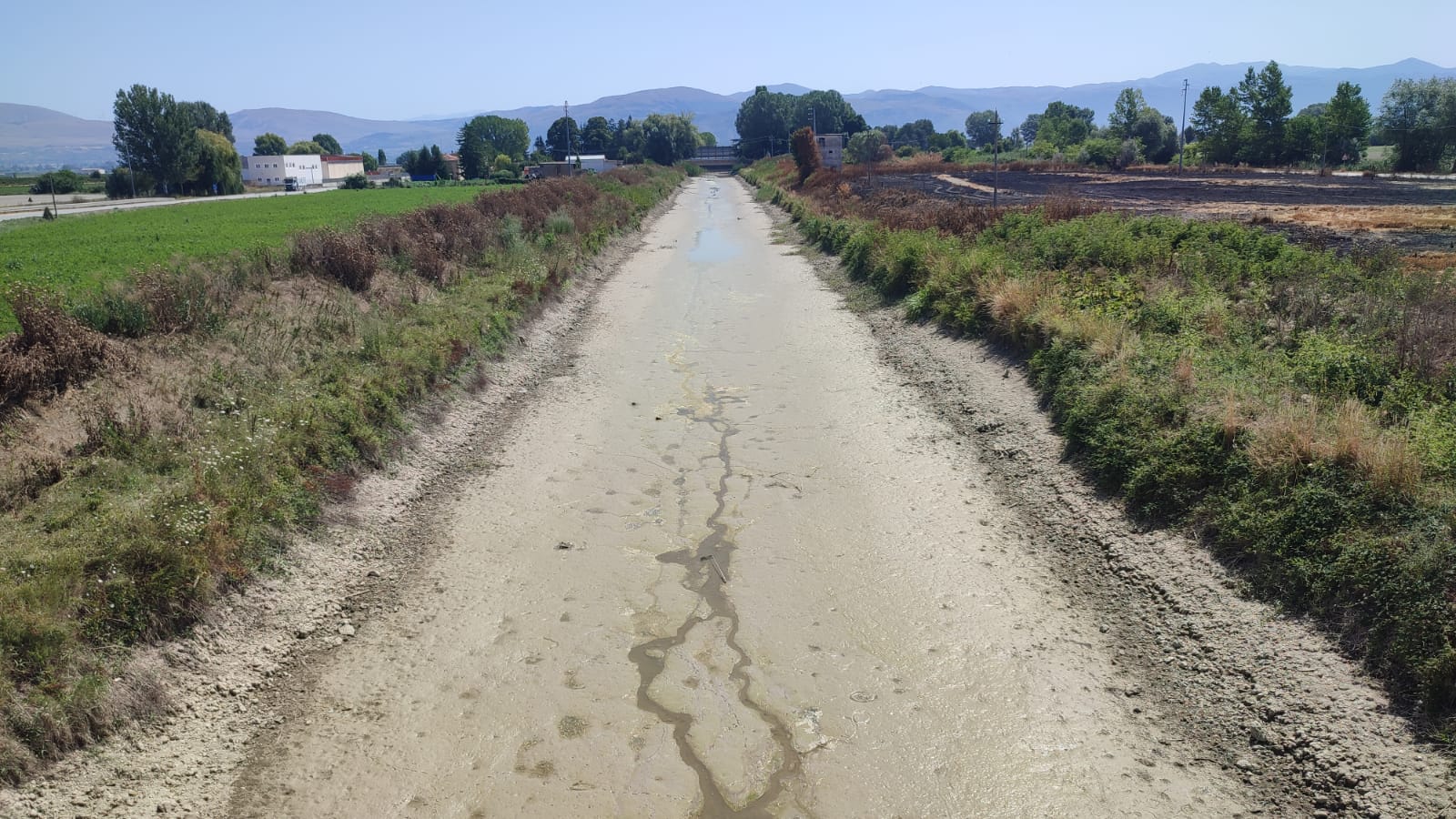In recent years, the Fucino Plain-one of Abruzzo’s main agricultural poles where the richness of the soil, of lacustrine origin, and the flat conformation of the area allow the cultivation of products of excellence such as the Fucino carrot (which has obtained Protected Geographical Indication – PGI – recognition)-has been facing a serious water crisis, made even more acute by the climatic crisis, responsible for increasingly frequent and prolonged drought events, and inefficient management of water resources.
To alleviate the crisis, the Abruzzo Region has endorsed an absurd irrigation project that involves not only the capture of the Juvenco River and the Restina and Boccione springs, but also the construction of a 200-kilometer pressure network on the eastern part of the plain.
A solution that, according to Salviamo L’Orso, Rewilding Apennines and Forumambientalista, is not only ineffective but also risks causing serious environmental and wildlife damage.
The Giovenco River, in fact, flows through one of the wildest and most biodiverse areas of the central Apennines, on the edge of the Abruzzo, Lazio and Molise National Park. Its waters feed an essential habitat for protected species such as the otter and, especially, the Marsican brown bear. Capturing the river would drastically reduce its water flow, altering ecological balances and endangering the survival of these animals, already threatened by habitat fragmentation and human pressure.
Yet, as explained in the press release issued by the Forum Abruzzese dei Movimenti per l’Acqua and signed by Salviamo L’Orso, Rewilding Apennines and Forumambientalista, “the same Basin Authority that should stand as guarantor of the river ecosystem and the communities that depend on it, on the one hand admits black and white that the data presented in the project are unreliable and that a water, hydrological and hydrogeological balance for the entire Plain is missing, prescribing its elaboration. On the other, in an official document, it issues a positive opinion going against a study on the hydrogeological basin of the Plain whose existence we learned of through a request for access to the records of the Abruzzo Region. According to the study by the University of L’Aquila, dating back to 2008, in rainy years the agricultural sector could have accessed a maximum of 5 million cubic meters/month in July and August. In dry years, that amount should drop to 2-3 million cu m/month, figures that do not take into account either the runoff to be released into the Giovenco River bed and canals or the effects of the climate crisis that is exacerbating periods of water scarcity. Yet as much as 4 million cu m/month was granted in the project for only 5,100 hectares, which, considering all 13,000 hectares of the Plain, would increase to 10 million cu m/month.”
Also of concern is the structural tightness of the proposal: the Juvenal is a modest watercourse, with limited flow and subject to strong seasonal variations. During periods of greatest water need, such as the summer, the river is often in distress, and using it as a primary source for irrigating the Fucino would mean taking resources away from an already fragile ecosystem, without guaranteeing a sufficient supply for the agricultural needs of the plain. Capturing its water would thus result in significant alterations to the natural balance of the watershed by compromising river habitats, reducing biodiversity and causing erosion or pollution problems in downstream areas. In addition, diverting its course could also have repercussions on the availability of water for other municipalities and territories that already depend on the Giovenco without, moreover,
solving the underlying problem that is the poor efficiency of the Fucino irrigation network, which requires serious structural interventions on the irrigation system: without modernizing the infrastructure and introducing more sustainable irrigation techniques (as drip irrigation could be, for example), every new source of water risks being wasted.
Therefore, our association calls for resources to be invested in sustainable structural interventions, such as the modernization of irrigation canals, wastewater recovery, rainwater harvesting, and the promotion of water-efficient farming techniques. Solutions that would safeguard both Fucino agriculture and the biodiversity of mountain streams.


